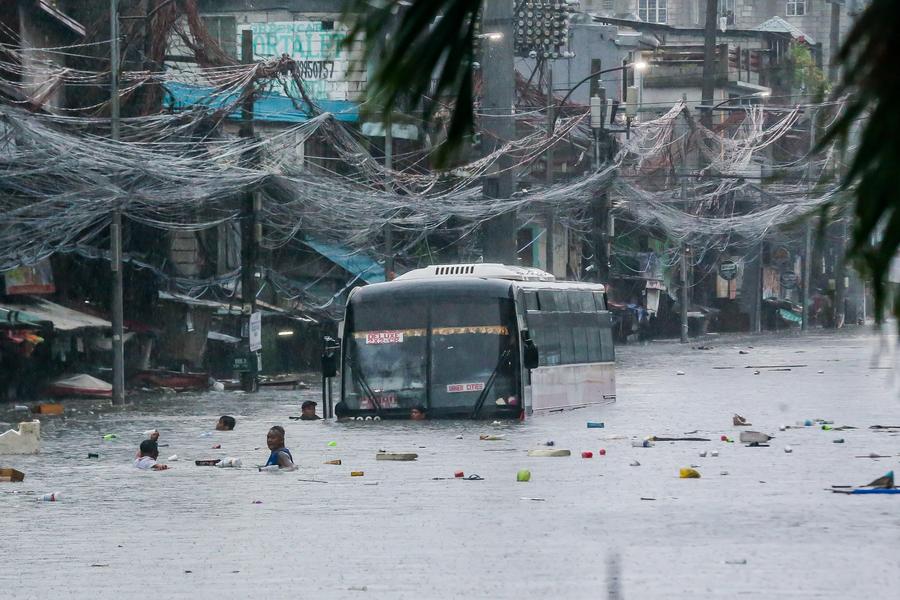The latest storm and low pressure information from PAGASA said that at 2:00 p.m. on March 25, local time, a new low pressure near the East Sea had formed within the Philippine Forecast Area (PAR).
According to available estimates, at 3:00 p.m. the same day, the new low pressure formed about 905 km east of southeast Mindanao, Philippines.
The US Navy's Joint Typhoon Warning Center (JTWC) said that the low pressure is named Invest 96W and is located southeast of Mindanao, Philippines.
JTWC forecasters said that the newly appeared low pressure is unlikely to strengthen into a storm within the next 24 hours. The current low pressure has a maximum sustained surface wind speed of about 30 km/h, with a minimum sea level pressure of nearly 1005 hPa.
Previously, in the storm forecast bulletin published on March 24 for the forecast period from March 24 to April 6, PAGASA stated that during the forecast period, there is no possibility of a tropical depression or storm in the PAGASA PMD forecast area.
Last week, PAGASA spokeswoman Ana Liza Solis said that there is a forecast of 0 to 1 tropical storm affecting the Philippines in April.
She also added that PAGASA forecasters said that there is a possibility of 8 to 14 storms appearing in the forecast period from April to September.
Of which, April 2025 is expected to have 0 to 1 storm, May is forecast to have 1 to 2 storms, while July, August and September are forecast to have 2 to 3 storms/month.
For the 2025 typhoon season, Solis said the number of typhoons is above average, between 16 and 19.

According to PAGASA, there are more tropical storms entering the Philippine PAR forecast area than any other place in the world. An average of 20 typhoons appear or enter the region each year, of which about 8 to 9 make landfall in the Philippines.
The peak of the Philippine typhoon season is from July to October, with nearly 70% of the typhoons forming during this period.
According to GMA Network, the 2024 typhoon season in the Philippines is an unprecedentedly intense typhoon season in history, with the emergence of 6 consecutive typhoons within 30 days.
Super typhoon Pepito (international name Man-yi) is the strongest of the year with peak winds of 195 km/h, making landfall in Panganiban, Catanduanes, Philippines on November 16, 2024.
This is the 24th storm of the season and the 6th to hit the Philippines in just one month, a clear difference from the average in November, which typically has just one super typhoon.
The intense phase of the 2024 typhoon season in the Philippines began with Typhoons Kristine (international name Trami) and Leon (international name Kong-rey) in late October 2024.
After that, a series of consecutive fierce storms appeared in November, Typhoon Marce (international name Yinxing) with strong winds of up to 240 km/h, super typhoon Ofel (international name Usagi) causing high tides and Typhoon Nika (international name Toraji) leading to very heavy rain.











